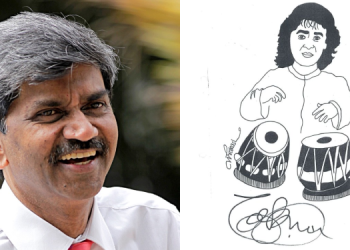- Health and growth prospects for local content development varies across Asia
- Korea and Indonesia are well positioned, but competition raises concerns in India
- Content and channel management more important than ever for incumbent broadcasters
Mumbai: The TV, film and video production sector in Asia is set to enter a new cycle of growth, according to a new report from Media Partners Asia (MPA), as economic development and evolving distribution ecosystems stoke competition and demand for better shows, as well as more varied formats and approaches.
MPA’s Video Content Dynamics, published today, reviews industry supply, demand and key drivers across India, Korea and five markets in Southeast Asia (Indonesia, Malaysia, the Philippines, Thailand and Vietnam) on free, pay and OTT platforms. The report breaks out ratings performance, economics and key players by genre (drama, movies, news, sports, kids and factual), as well as theatrical performance for local and international films.
TV is the dominant viewing platform in these markets. However, as more people get access to affordable high-speed broadband, quality content as well as proactive channel management are becoming increasingly important for incumbent broadcasters, MPA analysts noted.

“Online video is gaining traction in key emerging markets, as broadband speeds increase and connection costs come down,” said Steve Laslocky, VP, Research & Consulting, Media Partners Asia. “Leading broadcasters are rolling out ad-supported catch-up services while subscription online video services (local, regional and global) are gaining traction with premium Asian content as well as domestic and Hollywood movies. More than ever, a healthy local production ecosystem is a vital component of a healthy TV market.”
Korean content remains the gold standard for production in Asia, expanding beyond drama and film to become a genre in its own right. Costs are increasing in Korea’s highly competitive domestic marketplace, where profits are challenging. At the same time, demand and pricing power in MPA-surveyed markets continue to rise across both TV and online video, helping sustain Korea’s leadership position.
A MIXED PICTURE ACROSS ASIA
Future growth prospects and the relative health of local production varies across the seven markets covered by MPA’s Asia Video Content Dynamics report. Broadcasters that rely heavily on in-house teams, as seen in Malaysia and the Philippines for example, risk stifling ideas and competition. On the other hand, too many third-party studios competing for work can squeeze margins. This trend, seen in India’s TV industry, leaves little money to reinvest and develop local production for the opportunities and challenges ahead.
Indonesia stands out as a relatively healthy ecosystem among Asian growth markets. Southeast Asia’s largest economy comprises comparatively few major production houses, often operating with backing from one of the country’s major TV groups. Production costs are relatively low, while the free-to-air ad market remains buoyant, providing good returns for popular shows. This bodes well for the future development of Indonesian content.
By contrast, the environment for production in India is almost the opposite. The rollout of digital TV is dramatically expanding viewer choices for hundreds of millions of homes in the sub-continent, while opening up opportunities to develop premium and more targeted content. However, intense competition for TV revenues between hundreds of local production houses has driven margins to 15% and below, making it difficult to capitalize on these changes.
DRAMA RULES, BUT GENRE MIX ALSO IMPORTANT
Multiple genres are fueling consumption on free, pay and OTT services. Local dramas, however, remain the most important ratings driver across much of the region, despite concerns about stale storylines.
In India for example, domestic drama accounted for over half of all TV viewing last year, underscoring its dominance. Local series were also popular in Southeast Asia, representing 46% of viewing in Vietnam, 35% of viewing in Thailand and 31% of viewing in the Philippines.
Movies also tend to rate well on TV, especially in countries with a strong domestic film industry. This is especially evident in India as well as Indonesia and the Philippines, the two markets in Southeast Asia with the largest box office and where local films also have the highest share of revenue.
Sports, meanwhile, is a high-profile and high-rating but ultimately event-driven genre. Many international marquee events are aired late at night, limiting viewership, underscoring the importance of local tournaments. Monetization for some local sports, such as football in Malaysia, still lags international franchises however, despite high ratings.
Contrary to common perception, sports is not a major audience contributor on pay-TV, while the popularity of recent Hollywood movies on pay-TV varies by market. Kids content, meanwhile, is a leading pay-TV genre in Indonesia (50% audience share) and the Philippines (22%).
Some OTT platforms are starting to compete on early windows for Asian content, although not on Hollywood movies, where studios can still command high prices from premium pay channels and pay-TV operators across most markets. This will likely change over time.
Investment in local content and original productions for the OTT window, meanwhile, is growing rapidly in India and slowly expanding across Southeast Asia. In markets such as Indonesia, local movies, dramas and series are boosting consumption across regional SVOD services.
Monetization for ad-supported services however, with the exception of YouTube, is proving to be a challenge. As online video gains scale in the region, industry standards for comparable viewing data will be crucial to further growing online video advertising outside of the YouTube ecosystem.

















